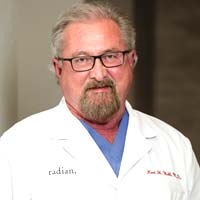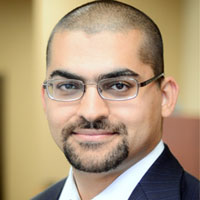ARTAS Robotic Hair Transplant System to be used by Dr. Marc Avram of New York
Robotics hair transplant systems are slowly becoming popular owing to the minimally invasive nature of the procedures, quick recovery times and almost non-existent scars.
Hair loss affects more than 35 million men who suffer from some degree of male pattern baldness or androgenic alopecia in the United States. If statistics are to be trusted almost two-thirds of American men will experience hair loss by age 35. B the age of 50 about 85 percent will experience the onset of baldness symptoms.
Also to be noted is that genetic hair loss which starts between late adolescence and before or during middle age has no option of treatment except surgical methods.
Restoration Robotics has installed an ARTAS System for Dr. Marc Avram a specialist in hair transplantation and other cosmetic skin procedures in New York. The robotic system ensures high precision besides also enhancing the efficacy of the treatment and ensuring patient safety and comfort.
The author of many books regarding hair restoration and dermatology, Dr. Marc Avram is Harvard trained and a board certified dermatologist who specializes in hair transplantation and cosmetic skin procedures.
As the length, color, and style of our hair helps project our personality, hair loss which is involuntary prompts anxiety as it causes changes in appearance. Also it is still a mystery why male pattern hair loss affects the crown and frontal scalp and not the sides and back of head.
The effects of hormones and genetics on hair follicles leading to male pattern hair loss are being studied by biotechnologists to prevent it. Till a natural solution becomes ready, systems like the ARTAS robotic arm will serve the purpose.
The image-guided ARTAS System is an interactive, computer assisted system that leverages image guided technology and precision robotics to enhance hair follicle harvesting procedures which not only helps patients but also surgeons who can deliver optimum services.
The ARTAS Robotic Procedure transplants permanent hair from the back or side of the head into thinning areas. A digital scan of the scalp is used to locate natural groupings of hair. Then selected hair is removed precisely using image-guided robotics without disturbing natural look of donor area.
The harvesting process is repeated until the desired amount of hair is acquired. Then the removed hair or grafts is transplanted by the physician into thinning areas of the scalp as per the design planned by the physician to give full coverage. This hair will grow naturally in its new location and grow as permanent hair which can be washed, styled etc. like always.
Hairfear
Frequently asked questions about hair transplant procedures
How much does a hair transplant cost?
Hair transplants can vary in price based off of the area in the world that you are interested in getting a hair transplant as well as the size of the area where you may need a hair transplant. Experienced doctors in the United States will often charge some of the highest prices for a hair transplant worldwide and this is why so many travelers make the move to other parts the world like Turkey, India, Thailand, Mexico...etc for their hair transplants.
Will a hair transplant hurt?
Although hair transplants may look like a particularly
unpleasant or painful experience is actually very little discomfort involved
with the surgery itself. Hair transplants are always done under an anesthetic so there's absolutely zero pain during the treatment itself. Many people actually relate the process as being very similar to going to the dentist for filling or root canal. Mild pain can persist over the course of postop treatment but he generally just resumes for a few days.
Who can deliver the best surgery?
It's usually best to consider working with surgeons who have and IAHRS certification or international alliance of hair restoration surgeons recognition. IAHRS can often deliver recommendations for the best surgeons in each particular area.
Is this scarring noticeable?
Any type of hair transplant will require the use of incisions throughout the scalp. There can also sometimes be a small scar from the donor area towards the back of the scalp. Asking to look at photos of the surgeon's previous work will help you to see roughly how bad the scarring could be. In most cases an experienced professional can limit the look of scarring and noticeable marks from the surgery.
How long does it take for the hair to grow?
In most cases hair growth will start within eight months and you can start to see a full effect from the hair transplant after a full year. The initial signs of growth can usually start between 3 to 4 months after the surgery.
Are the results permanent?
The hair follicles that are transplanted are generally the ones which are genetically resistant against the symptoms of baldness. As long as you receive hair loss treatment later in your life after the symptoms of balding have started to subside, you can have a better chance at permanent results.
While everyone know you've had surgery?
If you want to limit the chance that people may find out about your surgery it's important to give at least three weeks of healing as the surgical area will be affected and red just after surgery. After around a month of healing it can look far less noticeable. You could consider wearing a hat while time passes or opting for some extra time off if possible.
How long should I rest after surgery?
It's recommended to rest for at least a few days after surgery so that your body can recover. Trenton to over exert yourself and limit sexual activity, running in the gym for around 10 days after surgery.
Is it possible to lose more hair as a result of surgery?
There is always a chance of shock loss which happens when the hair is weak and miniaturizing after the surgery. As long as the surgeon is choosing the correct hair follicles and performing the surgery well it's possible to minimize the chance of this happening however.
Will I need another hair transplant?
The need for another transplant really depends on the individual. With a solid foundation surgery and working to potentially bolster results with drug therapy, you can improve the stability of the hair that was transplanted as well as prevent further loss. Getting a hair transplant early
on in your 20s or early on in life could lead to needing long-term transplants as hair loss can be progressive.







